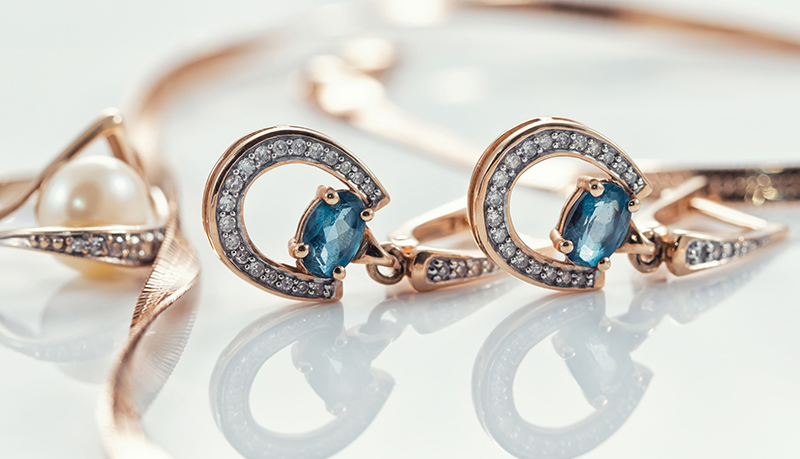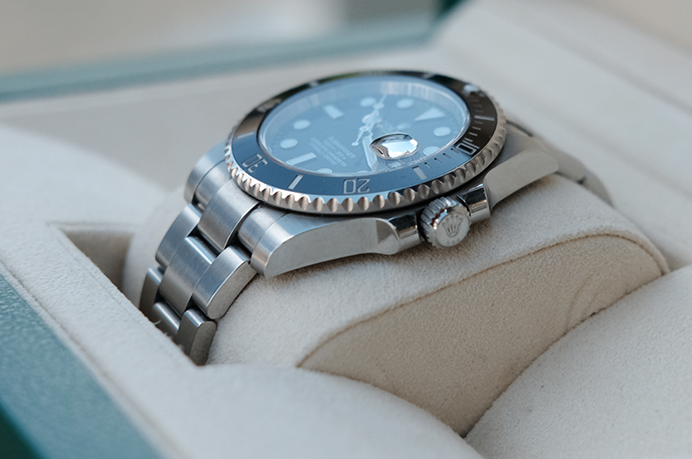Fine Art & Collectibles
Our dedicated team is renowned in the private-collection space, with a reputation for crafting the ideal policies to manage the risks associated with the ownership of fine art and other prized pieces. Some of our clients’ holdings exceed $1 billion— we service 12 of the world’s top 200 art collections. Others have just purchased their first major piece. Whatever the size of your collection, we will help to keep it safe.



A dedicated team of experts
Our boutique practice of dynamic professionals has a national reach, with a presence in every region of the country. These highly regarded specialists are natural collaborators who have forged strong relationships with most of the industry’s primary and secondary carriers, to deliver uncompromising, innovative service and results to each of our clients.
Our expertise
With expertise in both intimate and substantial collections, we have successfully safeguarded:
- Antiques
- Vintage and classic automobiles
- Fine art
- Rare books and stamps
- Jewelry
- Specialty guns, rifles. weapons, and armor
- Wine
- Sports memorabilia
Related resources

After the gavel drops: protecting your investment in fine art
Perhaps you’ve been a regular at the Armory Show for decades and accumulated quite a few pieces. Or maybe you are daydreaming about the triumphant drop of the gavel at Sotheby’s. Regardless, few things match the joy of a new acquisition. But as you contemplate your next purchase, consider this reality: whether made of canvas or marble, most fine art is fragile - easily damaged, hard to protect, and alluring to steal. And if heaven forbid something should happen, it’s irreplaceable. That’s why we recommend putting together a plan and a team to keep your artwork safe. Here are some of the essential steps to properly protect your art collection. The paperwork is important With a lawyer, figure out what entity will be the legal owner of the art: you personally, an LLC, a trust, etc. The choice depends on your particular tax and estate situation. You want insurance in place the moment you take ownership of the art at the gallery. You have a few decisions to make first: You can get a policy that covers only scheduled items (those you identify to the insurance company) or one that covers your entire collection as it evolves. Be sure to discuss this with your broker to ensure all works are included. You also need to determine how you want to set the value for each work. Will it be the amount you paid or its market value at the time of the loss? Your insurance broker should explain the costs and benefits of all the options. Buy the real thing There are a lot of forgeries in the art market. Avoid them by doing business only with reputable dealers and hiring independent advisers to double check. The work may be real, but if it was stolen by someone 65 years ago, the original owner could demand it back and leave you with nothing. Carefully examine the work’s provenance to make sure you are buying it from someone who has the right to sell it to you. Inspect the work’s physical condition. It’s silly to spend tens of millions of dollars on a painting you have only seen on the website of a foreign auction house. If you can’t be there yourself, hire an expert to check it out before you bid. Transport it safely Even if you’re only moving the drawing from a New York gallery to your home in Westchester, don’t casually throw the box in the back of your SUV. Hire packers and moving companies that specialize in handling fine art. Similarly, if you need to store your purchase, use only warehouses that have the appropriate climate control and security. Document the work’s pre-shipment and post-shipment condition so you can prove any damage later. Again, there are experts who can do this for you. Give it a proper home Many homes are filled with hidden hazards for fragile artworks. Sunlight can cause fading and heat or smoke from your fireplace can be harmful. Hidden wiring and water pipes can cause heat and occasionally explosions or floods. Also, you should hire a professional to make sure you install your art in a safe location. Not only is location in the home important but don’t forget two-and four-legged threats. How well will that statue hold up after an accidental run-in with a child or pet? Is the painting at risk of a stray elbow at your well-attended holiday party? Sometimes it’s prudent to invest in a specialized case (especially for those oversized pieces) or other protective measures. Every member of your domestic staff should be trained in the proper care and protection of your collection so that they don’t clean the Winslow Homer with Windex. If you and your art live in an area prone to earthquakes, hurricanes, wildfires or other periodic natural disasters, have a contingency plan in place. Do you want custom crates ready so the most valuable pieces can escape with you and your family? Is there a structure that could protect your unmovable outdoor sculpture in case of a storm? Share carefully If the MOMA wants to borrow one of your pieces for a major retrospective, enjoy the validation and make sure your investment is protected. The museum’s insurance policy should protect the art from the moment it is taken off your wall to the moment it is returned but it can’t hurt to talk to your broker and examine the policy’s details together. [We once advised a client before loaning a piece to a prominent New York City museum and noticed a glaring exception to the institution’s very comprehensive coverage: acts of terrorism were not covered.] It is important to stay vigilant as a fine art collector. Your pieces may be eternal but the market is temporal - so having your collection regularly appraised will help document its value in case of a loss. As you add new pieces to your collection or rearrange your artwork in various homes, take note of the steps above to ensure you are properly protecting your works. And, as your annual renewal rolls around, be sure to check your insurance policy. Older policies had restrictions on coverage, exempting losses from terrorism and some international travel. Now you can get those, and other perils covered. Make sure you work with a broker, with deep experience in the fine art market, and work together to ensure each piece of art continues to bring you the same delight as the moment you spotted it. ...
More info
All clink, no crash: 7 things a wine collector should know
The pleasure of collecting wine is endless: your first big purchase, discovering a new favorite, scoring the bottle you’ve long desired—not to mention uncorking the perfect vintage. But of course, there are potential hazards. Whether you’re just getting started or have a cellar full, we want to make sure wine collecting stays purely joyful. This guide will help you keep your collection safe—and your investment protected—by outlining the essential factors to a worry-free experience. 1. Temperature is everything. An important rule of wine collecting is: Store your wine in a climate-controlled space, because spoilage is among the biggest risks. The best storage set-ups include a temperature-monitoring system that triggers an alert whenever it gets too hot or cold. Remember that older vintages are generally more temperamental, so you might consider sending such bottles to a protected space. Some storage facilities are designed expressly for this purpose. If you live in an area prone to natural disasters, you should have an emergency generator in case you lose power. 2. Klutziness is the enemy. Put any bottles you store at home in a dedicated space where there isn’t much foot traffic, i.e. away from working vacuums or bouncing balls. If you live in a major city, there are dedicated places you can rent to store your wine. Just make sure it is equipped to store wine with a climate controlled space. 3. Swindlers abound. The documentary “Sour Grapes” details the story of Rudy Kurniawan, who defrauded knowledgeable collectors out of millions with fake vintages he bottled in his home. Keep in mind if you’re buying from a lesser-known auction house, make sure you understand the agreement terms—especially whose money is on the line if the item is not authentic. You can always confirm with a lawyer if you are not certain! And if you have a fraud protection policy, it’s worth a call to your broker to determine if wine is covered. 4. The future is uncertain. Some collectors buy “futures”—wines that have yet to hit the shelves—anticipating a good harvest. In some instances, this is the only way to get a bottle, but others buy them because the price is lower or a part of an investment strategy. All those reasons are valid, but it’s easy for things to go wrong, especially in regions like California, where climate events are on the rise. Once again, determine who carries what risks before you make a purchase. Keep in mind that any insurance policy that covers your wine collection will likely not cover futures. 5. The devil is in the delivery details. As with fine art, there are companies who specialize in wine transport. If you need help securing the right vendor, your broker can provide you with a list of recommendations with deep expertise in the market. Trucks or planes should be climate controlled and bottles should be packaged with more than just bubble wrap and tape. Also, check the contract before signing—you want their insurance to cover any losses along the way, not yours. Ask for all the same precautions with transportation if an auction house or vineyard is delivering your purchase. 6. Special lines for special wines. While there may be no way to replace your most cherished bottle, you can likely recoup your financial investment—just not under most homeowner’s policies (aside from a minimal reimbursement for spoiled food after a power outage) depending on the cause of loss. That’s why most serious collectors opt for a separate collections policy. You can insure the value of your entire collection with blanket coverage (which typically includes a separate sub-limit per bottle), or if you have particularly valuable bottles, you can schedule each individually for their specific amount, which some insurers provide with 150% replacement cost to cover market jumps. 7. Prices may vary. As with any collectible, market value spikes and dips. As a rule, you can mirror the appraisal schedule for fine art and jewelry - typically every three years. But the rarer the bottles in your collection, the more often you’ll want to get it reviewed. Also, for those investing in premier spirits - a relatively newer collectibles market - the same precautions apply when protecting your investment. The market has recently seen collectors purchasing scotch and bourbons in record numbers. A 1963 Macallan whisky sold for more than $1.5 million in 2018 at Christie’s. Free tip: Connoisseurs seek out bottles from “silent” distilleries, which have closed down. But before making a major purchase, be sure to do your research so you aren’t buying fraudulent bottles. As for storage, although whiskey is less finicky than wine it should still be stored in a climate controlled environment away from sunlight. Store bottles upright, as high strength alcohol can degrade the cork or alter the taste. And to protect your investment, ask your broker about a premium “all-risk” valuable articles policy, which will cover your spirits anywhere in the world. Whether its wine or spirits, your collection is rare and well worth the time to make sure it is properly protected. Your broker is available to answer any questions surrounding that newly purchased bottle and, of course, offer a toast to your safe and protected collection. ...
More info
A guide to protecting your watch or jewelry collection
When clients worry about protecting their precious jewelry or watch collection, their first thought is usually theft. But big—or little—heists are not the most common cause of loss. Rather, it’s what insurance carriers call “mysterious disappearances” and people might call “how could I have done that?” Take, for example, the client who left a ring in a theater restroom after taking it off to wash her hands. By the time she realized her mistake it was MIA. Or another client who asked her driver to have the car detailed; it came back sparkling, but the jewelry case she accidentally left in the back seat had been cleaned right out. While you might not be able to replicate an antique diamond or rare Rolex, having the right policies in place can help with a financial loss. Here’s a quick guide to make sure you are properly protected, whether it’s your own mistake (and cut yourself some slack—it happens to the best of us) or the result of someone’s bad intentions. Guard against potential problems. • Buy from reputable dealers. Insurance won’t cover you if you buy a fake, so take the time to get your piece looked at by an experienced independent appraiser. If you need help selecting the right appraiser, reach out to your broker for a list of recommended vendors. • Have a strong safe at home. The best ones are bolted to the foundation of your house and connected to your security system. • Consider a bank vault. If you only wear that $200,000 necklace a few times a year, storing it in an institution’s safe offers greater protection than that at home. • Don’t trust hotel-room safes. Before you book your vacation, call ahead to find smarter storage for particularly precious items. • Be discreet on social media. Show your friends pictures of your beachside bling in Bali when you get back; don’t Instagram an all-points bulletin to every thief in the Pacific. Get the right coverage. • Don’t count on your homeowners policy alone. Standard homeowner policies will only cover between $2,500 and $10,000 in jewelry, unless you buy an additional rider. The policy should itemize objects worth more than about $50,000. The rest of the collection can be insured at an aggregate value. • Insist on mysterious disappearance coverage. While all policies cover losses from theft, fire and natural disasters, some exclude cases where there is no evidence of a robbery. Be prepared: mysterious disappearance coverage doesn’t come cheap. Policies for jewelry and watches cost several times more than those for the same value of art. After all, it’s easier for a Rolex to fall out of a pocket than a Renoir. Still, you’ll be glad you are covered when the watch is gone and there’s no clue why. • Make sure insurance is in force from the moment of purchase. Typically, your policy will provide short-term coverage for items newly added to your collection. This temporary coverage is limited to a percentage of your overall policy value. It’s always a good idea to call your broker as soon as you make a major acquisition, especially if you are having it shipped home. • Keep the policy value up to date. When you renew your policy, be sure to adjust your limits based on changes in the markets for metals and gems. We recommend having valuable pieces appraised every three to five years. However, if you have items of unique artistic or historical value, they should be appraised more often. Act fast if something goes missing. • Call your insurance broker as soon as you think there may have been a theft. Most of the time you should call the police as soon as possible as well; you’ll need to show a police report to your insurance company. • Needless to say, be honest about what happened, no matter how embarrassing the story. Typically, claims are processed quickly, unless your insurer sees inconsistencies that raise questions of fraud. We can’t help you find those misplaced earrings, but we can help make sure your coverage is in order. While this is just a sampling of issues and suggestions for your collection, we are always happy to discuss any specific questions surrounding your individual pieces. Your collection is precious, and well worth the time to make sure it is properly protected. ...
More info
Fine art on the freeway: joys and risks of collecting classic cars
Pebble Beach. Quick what comes to mind? If it’s a slow parade of lovingly restored vintage race cars and roadsters driving along the dramatic Pacific coast cliffs—and not championship golf—then you’ve most certainly caught the classic car bug. Working with car collectors is a joy because they are exceptionally passionate about their pursuit. Our clients not only appreciate the beauty and craftsmanship of these automobiles, they also have a blast with their acquisitions—driving, racing and sharing the experience with the tight-knit community of equally engaged collectors. Whether you have a Bugatti or Bentley competing in the Concours d'Elegance or are contemplating which vehicle will start you down this road, we’re here to help make sure your classic car collection brings more pleasure than concern. Below, our team answers a few common questions around protecting an investment in classic cars. What do I need to worry about? Everything that concerns a regular car owner—accidents, breakdowns and theft— but multiplied by 10. A classic or vintage car is fragile, rare and valuable. In fact, sometimes it is irreplaceable so there are unique risks when owning a collectible like this. What are some of those risks? Well, classic cars are unique, which means the risk of theft or scam is higher. For example, after participating in a vintage car show, you will want to take necessary precautions to make sure your car gets safely put inside the garage and not in the hands of a thief. Another concern is market scams, which happen more often than you think. One client bought a vintage car on eBay only to discover that the purported “original” parts were decades younger than the rest of the car (meaning the parts were replaced…not refurbished as most collectors would want). To minimize these risks, we recommend to only buy from reputable dealers. In addition, have the vehicle appraised by an independent expert and demand proof you are buying from the rightful owner. If you need help securing the right vendor, your broker can provide you with a list of recommendations with deep expertise in the market. Should I actually drive my car(s)? Absolutely! That’s what makes collecting cars more fun than collecting stamps. But, be prepared for breakdowns—have a trusted towing service and knowledgeable mechanic lined up before you hit the road. And (buzzkill moment…) no personal automobile policies cover drag racing. So as tempting as it may be to reenact a scene from American Graffiti, a claim involving an accident will most likely be denied. How should I store my car(s)? We recommend you store it in a well-equipped garage with suitable alarms and security systems. Make sure the building protects against rain, ice, floods and whatever natural disasters are common in your area. That means if it’s in a separate structure on your property, it should conform to the same standards of your main residence—you may not want to situate it in a low-lying area or have a flat roof where snow can pile up all winter long. Even a slow leak or a few diligent mice can cause a lot of damage, so make sure someone checks on the car regularly if you can’t. Does my regular auto insurance cover my car(s)? Not really. You might buy coverage for your Lamborghini from the same company that insures the family Lexus, but the policies need different terms. Most important, the “settlement agreement” should treat the value of the car like a work of art that fluctuates with the market, because traditional insurance assumes a car gets less valuable every year. Whereas your car, most likely appreciates over time. With that said, you will also want enough coverage to recoup a loss that happens after the car appreciates. Similar to art, don’t forget to get it appraised every three to five years to keep the policy limits in line with the market. Do you recommend any other protections for my policy? We always recommend having a quick chat with your insurance broker. That will allow you to discuss the specifics surrounding your car(s). However to whet your appetite, here are two critical points worth noting as you pull out your policies. The policy should cover “diminution of value” of the car after an accident in addition to the repair costs. As we alluded to earlier, if that fender-bender means you need a new fender, the car is worth less than if it still had the original steel, even if there’s no difference to the untrained eye. You might want to consider “full transit coverage.” No, sadly this does not mean coverage when you ship your car cross country to participate in the Pebble Beach Car Rally. But rather, if you have a covered loss and need to transport your car for repairs, this coverage can be worthwhile. We may have just scratched the surface on your long list of questions, so set aside some time to speak with your broker. They are available to assist you with any concerns or additional questions surrounding that newly purchased classic car or the red beauty that is already a part of your collection. With a few precautions, you can spend the next sunny day on the open road, not a cloud or worry in sight. ...
More info
Wrap that big gift for your children with the right insurance
Don’t they grow up fast? Once it was “Daddy, I want that dollhouse” and “Mommy, can I have a new bike?” Now it’s, “Dad, how about a convertible?” “Mom, I really need that watch for work,” and “Thanks so much for the condo, you guys!” One of the benefits of success is the ability to help and support one’s children, whatever their ages. But when parents— especially those of substantial means— buy expensive gifts for their progeny, they must also consider the risk and insurance implications. Otherwise, it’s the parents, and not the child, who may find themselves either liable or sued. For example, say a parent gifts their 16-year-old a new car and soon after the child gets into an auto accident. If there is another person involved, and they engage a personal injury lawyer, one of the first things that an attorney will do is figure out who has the deepest pockets. Any resulting lawsuit may well target the assets of the parents. There are a host of actions to help manage the risks and liability associated with big purchases for children. Here, are some important tips: 1. Make sure everyone who owns the property is on the insurance. Look carefully at the title or deed to any property in the family to determine who is the legal owner. Everyone listed should also be named in the insurance. This issue typically arises when parents co-sign loans to help children buy cars or homes. Parents often assume that their children can and will secure their own insurance, but that leaves parents vulnerable to lawsuits. Any personal injury lawyer worth their salt will go after the connection with the most significant means, rather than their child. 2. Rather than giving your children real estate, consider giving them an LLC that owns real estate. There are many tax and estate planning reasons why you should consider creating an LLC to hold real estate meant for children. Add insurance to that list of benefits, as the corporate structure can shield parents from liability. 3. Don’t skimp on coverage. When children buy their own auto or homeowner coverage, we often find that they choose the cheapest options. This is generally not the best approach when the family has significant assets to protect. In particular, one should consider supplementing liability coverage with an umbrella policy. Don’t make the mistake made by Terry Bollea, aka Hulk Hogan. He bought just $250,000 in liability insurance for his son’s car, and when the young man had an accident—leaving one passenger in a coma—Bollea was on the hook for the cost and ultimately agreed to an undisclosed settlement. 4. Leverage family buying power to reduce premiums. With insurance, as with so many other products, better customers get better deals. Accordingly, it will probably benefit children to shop for insurance using the broker that handles the rest of the family’s coverage. The differences, in fact, can be sizable. 5. Put “insurance” on any freshman year college to-do list. So many things run through parents’ minds as they prepare to send their children off to college. Unfortunately, they often forget to think about insurance coverage. Students living off-campus probably need renters’ insurance. Parents’ homeowners policies typically only cover students living in official dormitories. It may also be wise to keep students on the family auto insurance—even if they are not taking a car to school. That way they’re covered if they drive a friend’s car (and also when they are home on vacation). Auto insurance for teenagers can be expensive, but there are often discounts available for students attending college more than 100 miles from home. This is just a sampling of the issues that may arise, which is why we are always happy to discuss any specific purchases or concerns with you. It’s generally a simple matter to identify the exposures created by gifts of high value or potential risk, and very much worth the time it takes to minimize them. ...
More info
Alliant's leaders discuss the unprecedented insurance market
The insurance market is going through significant changes, many of which we have mentioned before: more difficulty in securing insurance, higher premiums nationwide, even non-renewals. But the situation continues to evolve, and there are early signs that the market will stabilize. To give you a clearer idea of where things stand and what the future may hold, two members of our leadership team share their thoughts. Is the current market as tough as everyone says? Cindy Zobian, EVP, Managing Director: Simply put, we have never seen market conditions like these before. In essence, it’s a capacity issue: the rate of natural disasters—and the damage caused by them—have increased exponentially while home values and rebuilding costs have gone sky high. Mark Recht, SVP: Case in point: we just got another announcement from a carrier about adjustments caused by inflation. Unfortunately, higher premiums and insurance challenges aren’t just happening to property owners in areas prone to most natural disasters, such as California and Florida. Those are countrywide phenomena. There is currently a cloud casted over the market. CZ: That said, we can see glimmers of light at the end of the tunnel! Well, that’s hopeful. What makes you optimistic about the future? MR: We saw a similar market a while back in Florida after Hurricane Andrew, but within a few years, things had shifted for the better. Homeowners learned to incorporate new and better risk-mitigation methods, the government placed stricter building codes, technology helped us to map the riskiest areas, and we incorporated more flexibility into insurance programs. Together, that all worked to stabilize the situation. As for the current moment, Cindy and I just met with reinsurers [Note: As a reminder, reinsurers assume a portion of carriers’ risks] and they told us they are in the process of figuring out how to add more capacity. If they can take on more risk, carriers will be able to as well. CZ: We have seen many insurance trends over the years, but, ultimately, they come down to finding a middle ground in the marketplace. That’s what the industry is striving for again today. I’m not saying the problems will be solved in a year, but our decades in the business have us hopeful that things will get easier eventually. At the same time, I don’t think insurance is going to be a buyer’s market again. What is Alliant Private Client doing to help policyholders in this market? CZ: We are being proactive. We don’t wait to get non-renewal notices or other surprises. Our team is constantly on the lookout for unexpected solutions to lost coverage. MR: For instance, clients are becoming more comfortable with unregulated solutions, so that has allowed us to be more creative in our use of non-admitted options. And without being arrogant, the fact that we are one of the largest brokers in the country gives us significant clout among carriers who have begun to prioritize trading partners. We are also working more with different organizations, and sometimes even direct writers, to be able to offer solutions that make things easier for our clients. And what can clients do to make things easier on themselves? MR: First and foremost, they need to recognize that it really is no longer a buyer’s market. These days, the priority is finding a suitable solution; pricing is secondary. Also, they should consider consolidating insurance solutions under one broker because carriers may, for example, be willing to take on your multi-million-dollar house in California’s brush territory if they are also insuring your less-expensive ranch in Idaho. You lose that benefit if you are dealing with multiple brokers. CZ: Also, when you get a bill, pay it on time. If you let your policy lapse, you might not be able to get it back. And be really thoughtful about making claims. Putting through even a $50,000 claim might hurt your premiums and renewal prospects. Be sure to discuss every potential claim with your broker first. Then they will help guide you on whether or not it’s in your best interest to put forth that claim. MR: And whenever you receive notice of a critical requirement—be it to trim brush or put in vents—follow through. Maybe you could ignore these in the past, but not anymore. Today, failure to comply might result in a policy cancellation. CZ: And lastly, of course, our clients should know that we are always here to help with questions and concerns about their risk management strategy. ...
More info
Market update: why premiums and nonrenewals are rising
The insurance industry is in the midst of a correction due to a significant increase in catastrophic events such as hurricanes, wildfires, floods, and more. This has resulted in some clients facing challenges, ranging from higher rate hikes to non-renewals. Whether you have been directly affected or not, we want to educate you on the current market situation. To help you better understand what is happening, why it’s happening, and how you can mitigate its impact on your insurance program, we convened a group of senior leaders to answer frequently asked questions. However, before we go into the details, let’s take a step back and talk about insurance more broadly. Essentially, the market only functions because risks are pooled, and thus transferable. To cover one person’s home (or automobile or boat, etc.), carriers need to receive premiums from all their clients in an amount sufficient to offset their total exposure. The downside: Your rates are not just affected by your personal claim experience, but also by all those in the pool with you. Insurance can’t work if rates are only raised for people who’ve made claims. So even if you have a clean record with no claims, you could experience a renewal where your rates go up because you are in an area that overall has had large losses. The upside: While the ‘pooling’ of risk means you will be impacted by other people’s losses, it also means that in the event you have a major loss, you will likely be paid an amount that greatly supersedes the amount you’ve paid in premium over time. Say you pay an annual premium of $16,000 over the course of 20 years, then in year 21 lose a house that is insured for $4 million due to a fire, you have still come out ahead. Alright, now to the FAQs... Why is the market in this current state? Although it may feel personal, the market conditions are not a direct affront to individuals. Instead, two main factors are driving the changes. First and foremost, extreme weather events have been increasing across many parts of the country. Examples include the rising number of wildfires in the West, which have doubled in the past few decades. While California and the Gulf Coast are particularly affected, the Northeast and Midwest have also experienced their share of challenges. At the same time, major cities nationwide are also struggling with the effects of an increasingly crumbling infrastructure. Aging pipes in urban buildings have led to more costly water damage claims. For example, one of our carriers has paid nearly double this decade in water losses, and the number one reason is plumbing failures. Furthermore, the rising costs of repairs and reconstruction have compounded the challenges. The demand for skilled labor in the rebuilding process now surpasses supply, and replacing high-end appliances and amenities comes at a steep price. It’s important to note that suitable temporary living arrangements during such times are also costly. Ok, so how will this affect my premiums? Where once we considered anything more than 10% on the high side, we now regularly see jumps of 20%-25% a year. We encourage you to contact your Account Executive regarding your specific program and how your premiums may or may not be affected. Does the new reality impact me if I don't live in an at-risk area? Its possible. Keep in mind, while you may live in an area less prone to catastrophic events, that doesn’t mean you are exempt from severe losses. Hailstorms in Wyoming, tornadoes in Texas and severe winter storms along the East, have all been areas with damaging losses over the past few years. Therefore, no area is truly immune to loss. Even if one area within a region is not at risk of catastrophic loss, there may still be a raise in rates within that state. For example, premiums may go up on a townhouse in San Francisco because of wildfires in L.A. County. The reality is, the impact of these trends is nationwide. So, it is important to speak with your insurance broker as some markets are increasing their thresholds in certain areas and others are not writing any new business. Is there any relief in sight? It depends largely on science. If major weather incidents and the ensuing catastrophic losses continue or increase, carriers will then need to continue to adjust their exposure and rates accordingly. What can I do to help myself? To keep your premiums as low as possible, and your coverage intact, make your account look as appealing as possible to underwriters. That means sustaining small losses, utilizing higher deductibles and keeping your insurance available for catastrophic, worst-case events. This will also provide premium savings. For example, data suggests that properties with one water loss will likely realize another one soon—particularly in apartment buildings. If you put in a claim for a small water loss, you may be a riskier proposition to carriers. Therefore, taking care of small claims, could work in your favor when your policy comes up for renewal. We also encourage you to comply with all the recommendations suggested by your insurance carrier and to pay your premiums on time. Brokers can no longer guarantee reinstatement if you cancel for non-pay. Also, take the time to contact your broker and review all of your coverages. When acquiring new items or properties make sure you reach out to them to ensure you have the proper protection. If you still haven’t told them that you purchased a new car for your son months ago or you started investing in a wine collection – you should place a quick call and confirm coverage has been issued accordingly. Lastly, if you live in areas with serious weather concerns and have experienced a non-renewal or a drastic rate increase, ask your broker about secondary markets. They’re not ideal, and coverage terms may not be as broad as your existing policy, but they’re better than nothing. Anything else I should know right now? If you plan to follow our advice and only put in claims for major losses, select policies with high deductibles. You can also get breaks on premiums by complying with any safety measures prescribed by your carrier. Even if you don’t think you need a leak detector or backup generator, putting one in anyway will maximize the credits. Hey, whatever it takes! Always know we are here to guide you through this correction and any other insurance concerns as well. ...
More infoMore specialty practices




